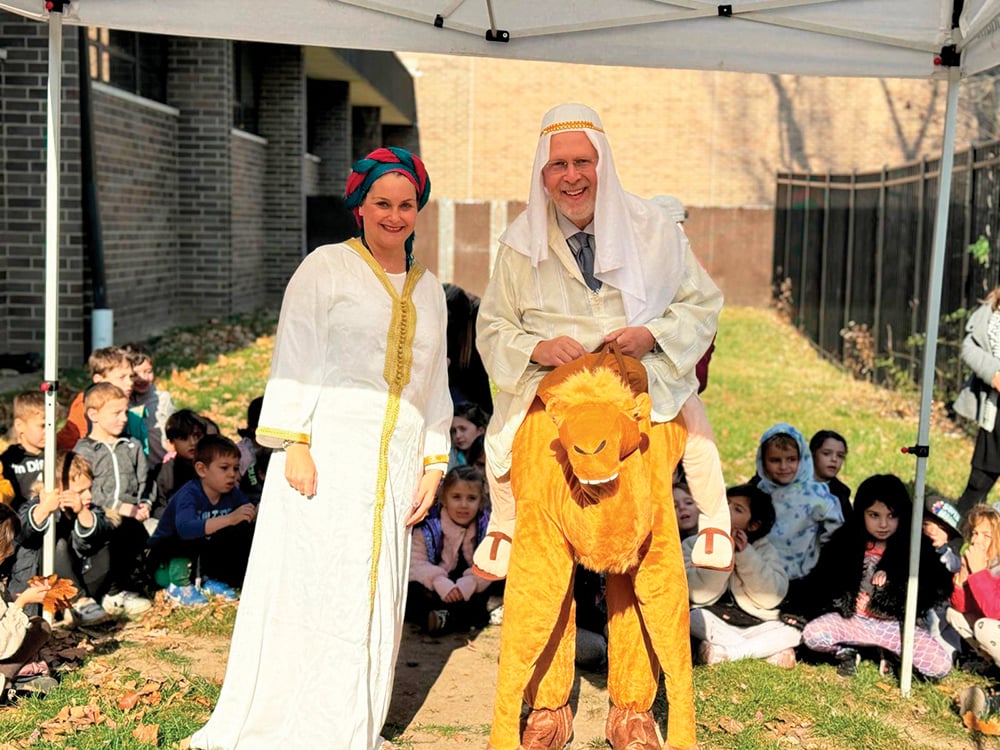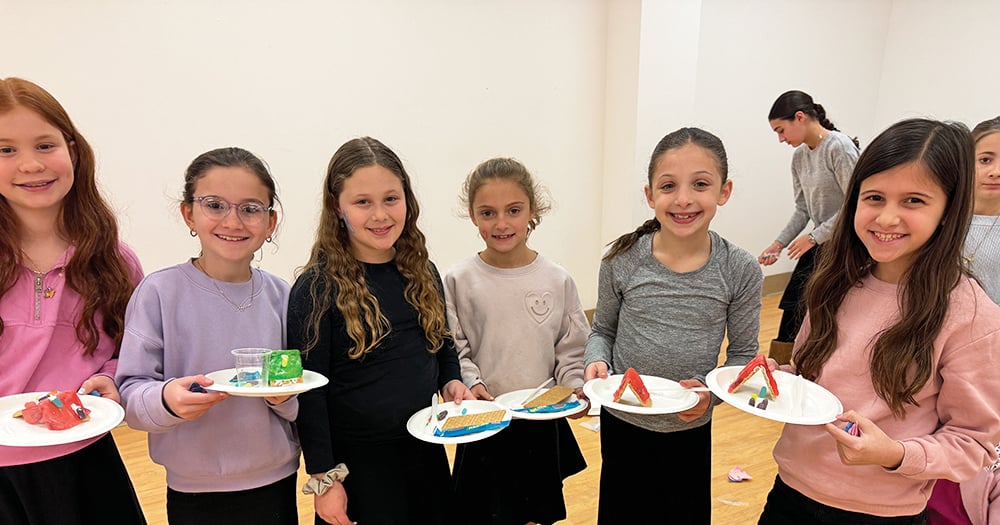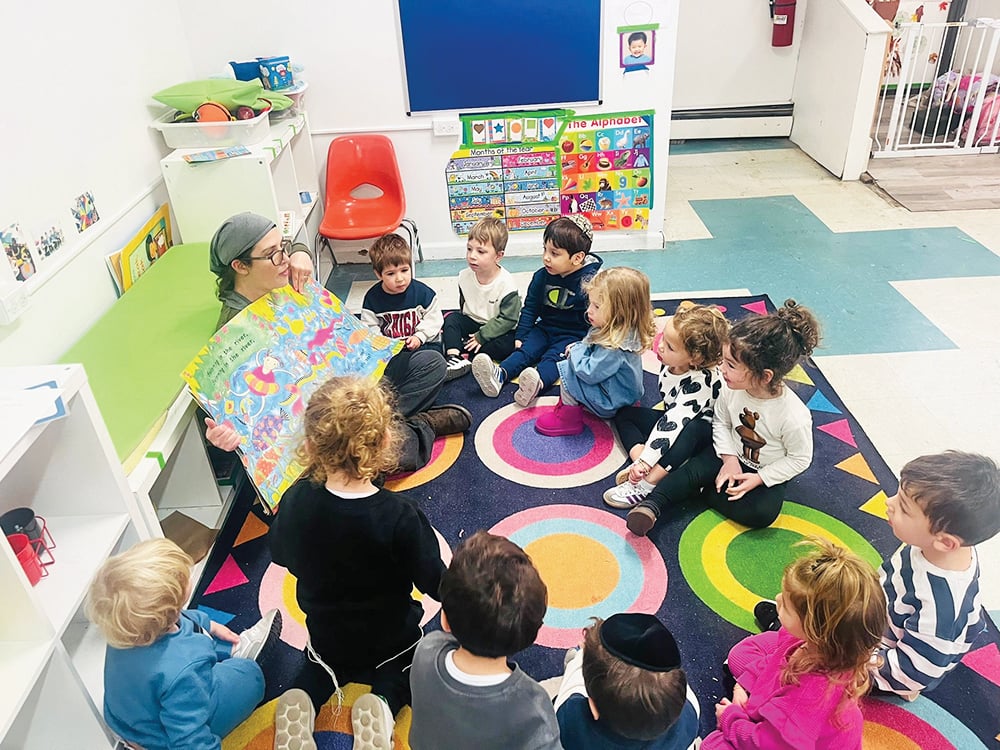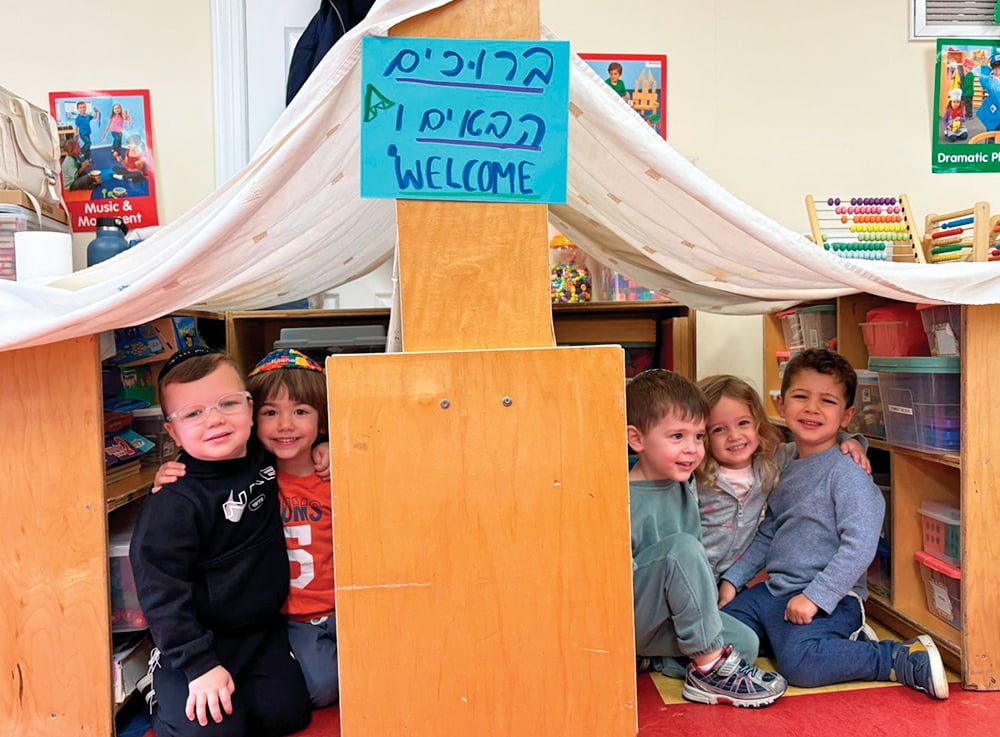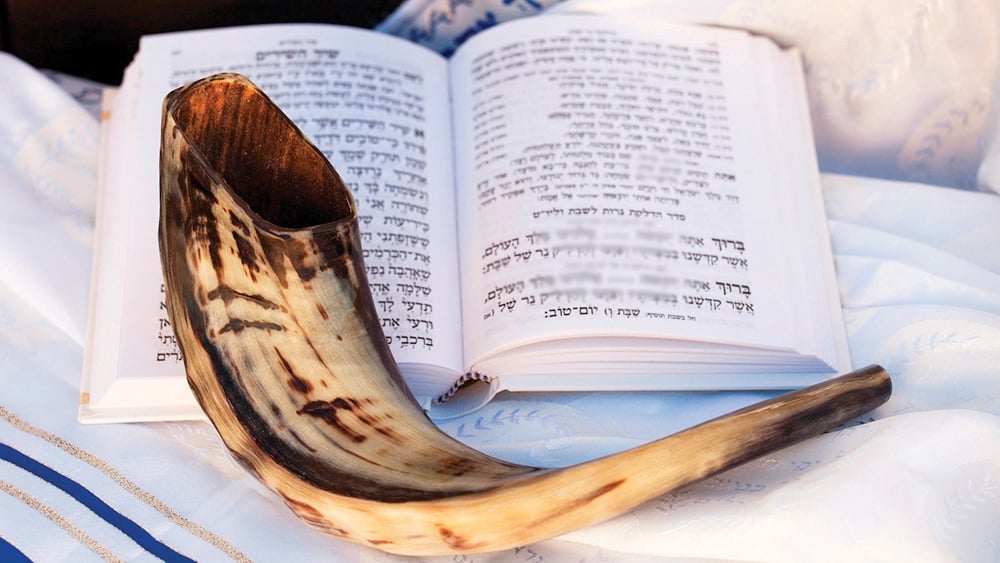
The text and syntax of tefillah are unchangeable. These timeless words—hewn from Tanach—forged by Chazal and imbued with elegance and gravitas by our mesorah, carry enduring significance, spanning countless generations. Yet, the emotions that pulse through our prayers are constantly evolving, reflecting the dramatic shifts and deep transitions that shape our lives. This year, as we traverse a landscape of complex emotions, certain pesukim and verses from our tefilla resonate with deeper and more profound meanings than we have ever known.
October 7th altered everything. It redefined Jewish identity, reshaped our sense of Jewish peoplehood and transformed our relationship with our homeland. On this sacred day of awe and prayer, this transformative event and our national tragedy must infuse our tefillot.
Here are 10 pesukim or parts of Rosh Hashanah tefillah which resonate with new significance in the wake of October 7th. Let your tefillot rise from the shared sorrow of our people, whose spirits were fractured on that fateful day. Only Hashem’s light can heal our broken hearts and bring solace to our wounds.
- Hester Panim
The quintessential pasuk of Rosh Hashanah
תקעו בשופר גדול בכסה ליום חגינו
literally translates to, “Blow the great shofar on the new moon, on the day of our festival.” Chazal, though, associated the word “keseh” with the similar word of “kisu,” which means “something which is hidden.” Rosh Hashanah is in many ways, a concealed chag. The Rosh Chodesh elements of this day are subdued, and even the divine presence of Hakadosh Baruch Hu which is central to Yom Hadin remains concealed from most of humanity. By being judged, every person inadvertently, involuntarily and unknowingly submits to divine authority. But they are unaware. On Rosh Hashanah, we strive to unveil hidden truths and to illuminate the shrouded presence of Hashem.
Unfortunately, during this past year, His presence has often been severely obscured. On October 7th, we endured 12 hours of traumatic hester panim—a period during which divine intervention felt starkly absent. In the time since, we have encountered a more moderate period of hester panim, yet the shadow of concealment lingers. Rosh Hashanah is a day to unveil the hidden authority of Hashem, and this year, our longing for His revelation of גילוי שכינה resonates with more pressing urgency. After a year of seemingly endless “keseh” or incomprehensibility, we yearn for “gilui” or revelation.
הופע בהדר גאון עזך על כל יושבי תבל ארצך
- Restore Our Honor
My rebbe, Rav Amital, recounted davening on Rosh Hashanah during the Holocaust in a charred cellar. Few had machzorim, as they recited prayers by heart in cloaked darkness. As they recited the prayer that Hashem deliver glory to His people …
ובכן תן כבוד ה’ לעמיך
some began to laugh and cry at what seemed a preposterous dream. Our people had been hunted like animals, murdered in cold blood! What possible honor could be endowed to this sunken nation? The survivors could not possibly imagine that, over the next 80 years, the kavod of the Jewish people would steadily rise—transforming despair into resilience and honor.
Yet here we stand once again, mocked and scorned—accused of baseless and malevolent activities. Once more, our glory has been tarnished. We plead to Hashem to restore honor to His people and to bring hope to all who seek Him.
The continuation of this section of ובכן תן כבוד begs Hashem to deliver joy to His land and happiness to His cities:
שמחה לארציך וששון לעירך
This past year, as our people have endured immense suffering, our cities have faced relentless attacks. In Europe, Jews were assaulted, but on October 7th, Jewish communities were ravaged, and Israeli cities fell under the shadow of missiles. Entire communities were traumatized by murder and hostage-taking, while others faced and continue to endure widespread displacement and dislocation. There is little joy in many cities in Israel. We implore Hashem not only to restore our national glory, but also to bring serenity and peace back to our cities.
- Banish Evil
In the section of tefillah known as ובכן צדיקים, we visualize the righteous people celebrating Hashem—while fervently praying for the eradication of evil from our world.
וכל הרשעה כולה כעשן תכלה, כי תעביר ממשלת זדון מן הארץ
In the past, we prayed to Hashem to remove forces of evil which we imagined as poised to attack our people and to threaten humanity. Sadly, this year those forces of death and murder unleashed their anger and violence upon us, and, of course, against all of humanity. They attack the Jews, but they murder humanity.
This year, the infernal subjects of our prayers—the wicked governments and rulers—are not difficult to decipher or to identify. We pray that Hashem swiftly eradicate the evil nations, organizations and armies that terrorize our people and assault our homeland. With Hashem’s help, we have begun this project, but we implore Him to completely cleanse this world of those who have forfeited their right to inhabit it.
This tefilla not only calls for the removal of wicked governments, or the “memshelet zadon,” but also seeks the eradication of “risha”—the pervasive evil that sabotages humanity. Unfortunately, we have witnessed the alarming rise of societal “risha,” not only from governments but from opportunists who exploit this conflict to unleash their antisemitic hatred and violence against us. We implore Hashem to eliminate not only tyrants and corrupt regimes but also, to reverse the insidious “risha” which has distorted truth and perverted morality.
- Thundercracks
Rosh Hashanah is a deeply auditory experience, filled with sounds that resonate with מלכות שמים. The shofar blasts remind us of the deafening moments in history when Hashem’s presence was manifest. From the rushing waters of creation to the thunderous lightning at Matan Torah, from the sweet notes of the shofar which fluttered through the Beit Hamikdash to the thunderclaps which will signal the end of days—these powerful sounds convey Hashem’s dominion.
Yet, on October 7th, these sounds were hauntingly distorted—reverberating with violence and blasphemy. The vile cacophony of bombs, missiles and blasphemous and bloody shouts of “Allahu Akbar” filled the heavens with the desecration of Hashem’s name. Thunderous heavenly sounds—meant to affirm Hashem’s authority—became twisted by heresy and hatred.
On Rosh Hashanah, as we recall the sacred sounds heralding the arrival of the Shechina, we ask Hashem to renew these divine echoes and amplify their heavenly proclamation of His authority.
- Memory of Yitzchak
When recalling the covenant of Yitzchak, the Torah doesn’t employ the term zechirah (remembrance) as it does for Avraham and Yaakov.
וזכרתי את בריתי יעקב ואת את בריתי יצחק ואף את בריתי אברהם אזכור
Chazal explains that since Yitzchak was prepared to be sacrificed, his ashes are “perpetually assembled” upon the mizbeach of Har Hamoriah. They are so immediate and vivid that they require no special “act” of remembrance or “zechirah.” It is as if Hashem looks directly below and instantly recalls Yitzchak’s sacrifice and courage.
If Hashem remembers the bravery of a single soul who was nearly sacrificed, and responds to his virtual akedah ashes, how much more should He remember the countless lives tragically consumed in flames on that dark day, and the remains which were rendered unrecognizable. What of the ashes of millions of His people denied a dignified burial in the killing fields of Europe? How can a 21st-century Jew recite this pasuk without trembling, without appealing to Hashem to acknowledge our mesirut nefesh? As history unfolds, so do our tefillot. While the words remain unchanged, their meanings deepen, enriched with new layers.
- His Son, Our Sons
At a deeply passionate moment in the Musaf prayer, we remind Hashem that we are not merely His subjects, but are also His beloved child:
הבן יקר לי אפרים אם ילד שעשועים
We all recognize the depth and intensity of the love we feel toward our children, and by citing this pasuk, we yearn for Hashem to see us through that same lens of parental affection. Tragically, this past year, we have lost too many sons and daughters. We stood by their graves, enveloped by the agonizing cries of parents—each cry, a wail of deep loss and agonizing heartbreak.
On Rosh Hashanah, recall this love and channel it: the love we felt toward our children and our students who protected us and defended us with their lives. Ask Hashem to mirror that love, to look upon His children as we do ours—with infinite compassion and affection.
- Inner Sheep
The mishna in Rosh Hashanah portrays all of Hashem’s subjects appearing before Him as “bnei marom.” One interpretation of the Gemara for bnei marom—the one adopted by Unetaneh Tokef—is that we appear before Him like sheep. Sheep are utterly helpless, at the mercy of their shepherd—unable to turn right or left, and defenseless.
This year has deepened our gratitude for the privilege of having a Jewish army to protect us. While October 7th was not the first pogrom in our history, it marked the first pogrom followed by a war. Yet, even amidst our courageous efforts to defend our land and people, we often contended with a disheartening sense of helplessness—acutely aware of our reliance on our Shepherd to protect and guide us through this darkness. Tap into that inner vulnerability. This year, we know too well how to feel helpless as a sheep.
- Release Them
The first pasuk of Zichronot doesn’t take us back to any grand moment of Jewish history. Instead, we ask Hashem to have mercy on us, just as He had mercy on the animals in Noach’s teivah. These animals had no merits, no covenants. They were merely creatures—sequestered in a dark, sweaty and putrid ark for 12 months—with little light, air or food. Hashem’s mercy was bestowed upon them simply because they were His creations who were suffering intolerable conditions.
A hundred hostages—our own people, our own children and brothers and sisters—are now enduring conditions far worse than the animals aboard the teivah. Who can unsee the horrifying images of the airless, oxygen-deprived tunnels in which they are confined? We plead: “Hashem, release them from their imprisonment, just as You released Your creatures from the confines of the teivah.” Show them that same mercy.
- Release Us
The shofar begins with a pasuk which implores Hashem to release from confinement.
מן המיצר קראתי ק-ה ענני במרחביה
We all feel cornered—just as our ancestors did at the Yam Suf—surrounded by enemies who seek only to erase us from the map. The physical shape of the shofar reflects our plea: sound enters through a narrow, constricted opening and emerges from a broad, wide exit. We ask Hashem to expand our situation—to open up spaces of relief, and to free us from being cornered and trapped.
- They Will Know
And finally, we return to the central theme woven throughout our tefillot: our hope for the day we yearn for, a day hinted at every Rosh Hashanah—a day when the entire world recognizes His presence and embraces His will.
וידע כל פעול כי אתה פעלתו, ויבין כל יצור כי אתה יצרתו, ויאמר כל אשר נשמה באפו ה’ אלקי ישראל מלך ומלכותו בכל משלה
One day, Hashem’s presence will be undeniable—a force uniting the world. Only His presence can guide humanity to transcend hatred, ego and selfishness.
ויעשו כולם אגודה אחת לעשות רצונך בלבב שלם
Only through Hashem’s presence can the humanity coalesce into an אגודה אחת—a unity born of shared purpose, common interest. Pray that Hashem reveals Himself to an injured world, that His light replaces evil and murder with spirit and morality and that He renews His great love for His chosen people.
K’tiva V’chatima Tova.
The writer is a rabbi at the hesder Yeshivat Har Etzion/Gush, with ordination from Yeshiva University and a master’s degree in English literature from the City University of New York. He is the author of Dark Clouds Above, Faith Below (Kodesh Press), on religious responses to Oct. 7, as well as the soon-to-be published book Reclaiming Redemption: Deciphering the Maze of Jewish History (Mosaica Press).



